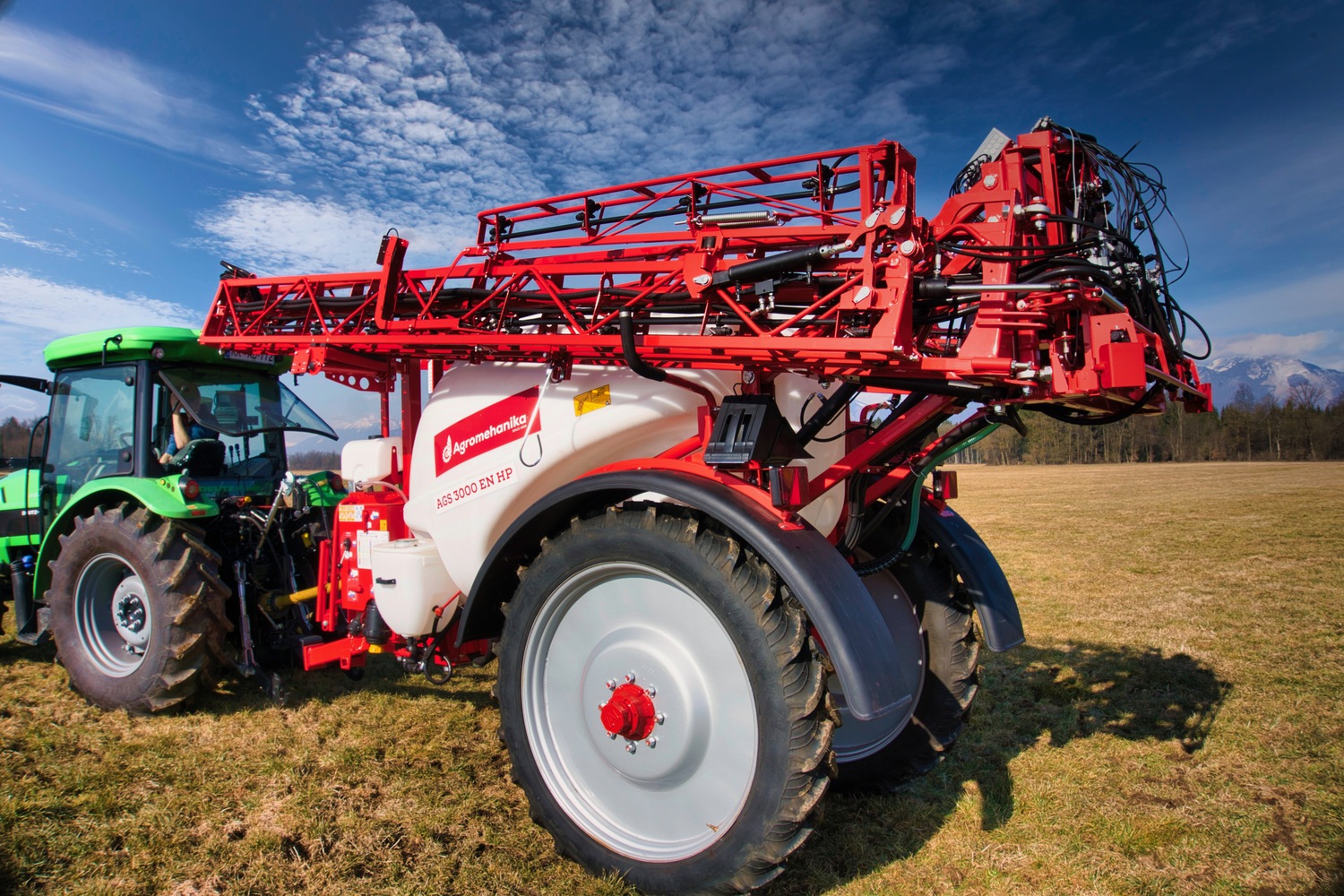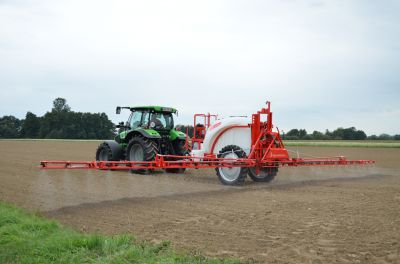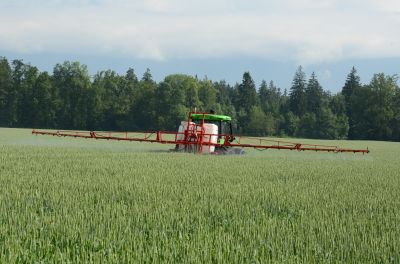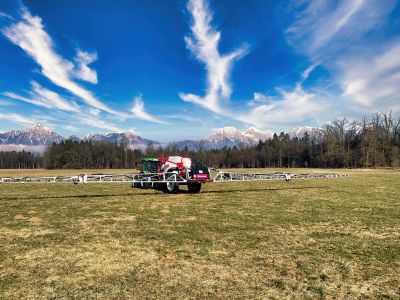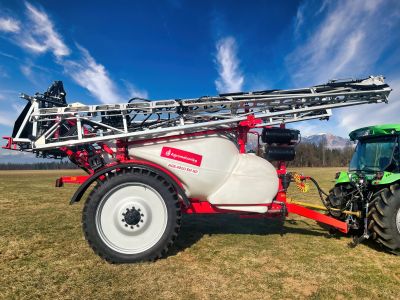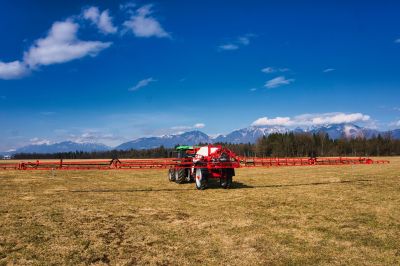An optimal adjustment of the sprayer will help increase the efficiency of crop protection agents used, reduce spray drift and maintain the sprayer in a good operating condition.
Regular maintenance ensures flawless operation of your sprayer. It also saves time and money.
If time permits and you want to be completely sure of your adjustments, always test the sprayer using clean water.
Listed below are the vital parts of the sprayer that require special attention of the user before each spraying:
1. Pump
Check the oil level regularly and add more oil, if necessary. Do not exceed the maximum oil level height. It is recommended to replace the pressure diaphragms every 300 hours of operation.
Correct air pressure in the air chamber enables a stable operating pressure. Adjust the pressure in the air chamber to at least 1/3 of the operating pressure value. In any case, the pressure in the air chamber must never be greater than the operating pressure.
2. Spray boom
Perform a visual inspection of spraying hose and hydraulic hoses. If necessary, replace or tighten them. It is recommended to lubricate the moving parts with grease.
Check the operation and adjustment of all hydraulic cylinders. Special attention should be paid to the cylinder for returning the spray boom in the working position. The latter should perform this operation in a very short time.
In most cases, the distance of the spray boom (of the nozzles) from the ground should be adjusted to 50 cm.
3. Inspection of nozzles
First and foremost, the nozzles must be clean. They can be cleaned with a suitable plastic brush.
Then the nozzle flow (l/min) should be measured with a measuring glass and a specific pressure setting. The test measurement is obtained using clean water.
The result is then compared to the table of nozzles. If the measurement results diverge from the table values by more than 10%, we recommend a replacement of the nozzle inserts.
Adjust the nozzles or use appropriate nozzles according to your spray volume per hectare (l/ha), operating speed, type of spray and size of the area.
Suitable nozzles can be selected by means of numerous free “online calculators” or nozzle table on sprayers. We recommend using “the Lechler calculator”, which is available here:
https://www.lechler.com/de-en/support/support-agriculture/nozzle-calculators-agriculture/
You can also install a free “nozzle calculator” on your smartphone:
https://www.lechler.com/de-en/support/support-agriculture/apps-agriculture/
4. Filters
During every maintenance, pay special attention to the suction and the pressure filter. Dirty filters often lead to damages to the pump.
5. Manometer
In spraying, we also place great emphasis on the manometer. This small pressure regulating device has a strong influence on consumption, so it is important to accurately adjust the pressure on the manometer.
By following the tips above, your sprayer will operate properly and you will be able to save time and money.
Read more on AGS sprayers HERE


